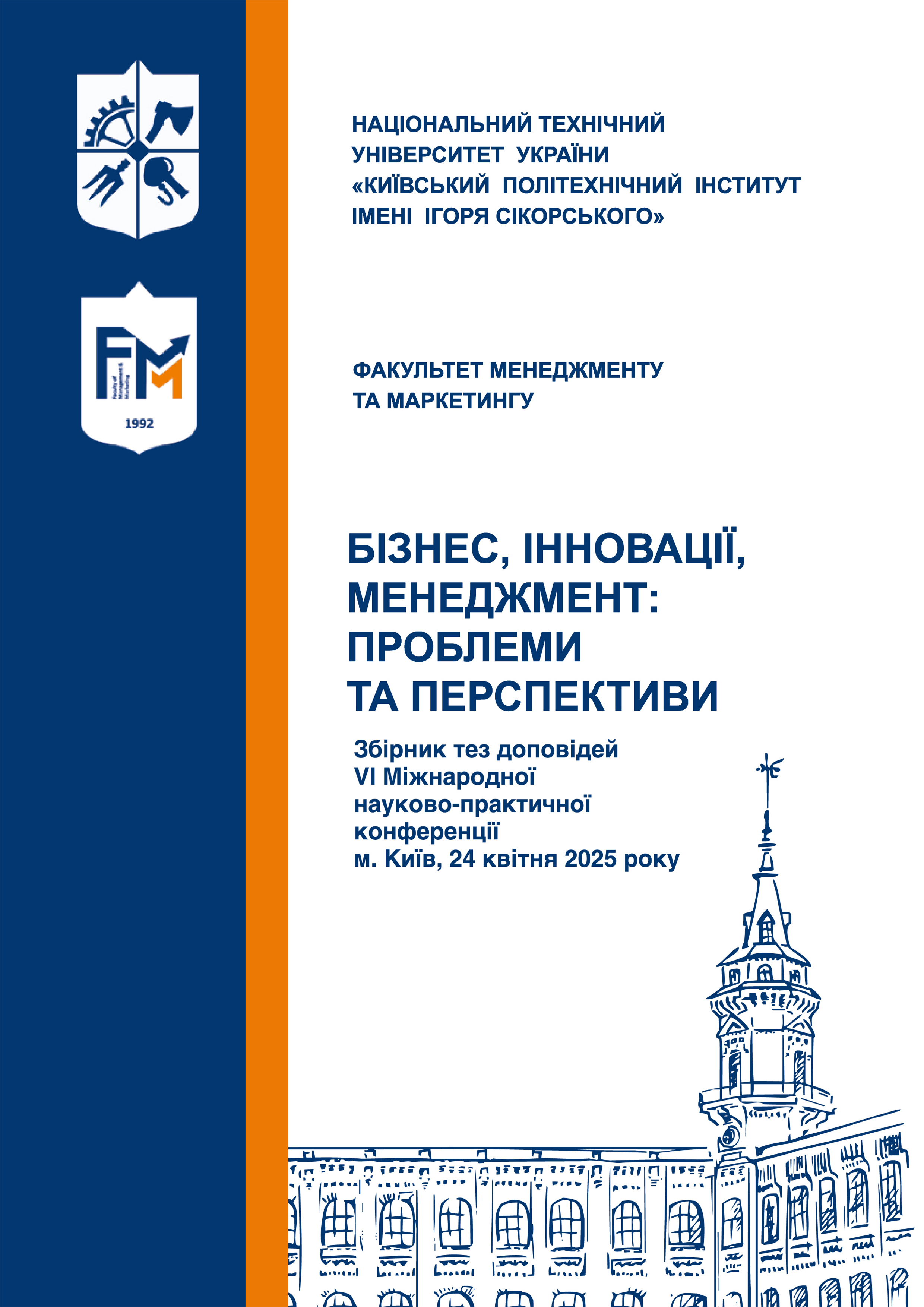METAVERSE: ORGANIZATIONAL AND ECONOMIC PRIORITIES, VALUES AND TRENDS
Анотація
Each subsequent generation of digital technologies and breakthrough innovations expands the capabilities of the Metaverse in terms of personalization, service quality, functional efficiency, prototyping, big data processing, and deep digitization of production processes. By focusing on innovation and the development of the institute of creativity, the creators of the Metaverse prioritize expanding the boundaries and capabilities of virtual reality.
3D-visualization “turns over” people’s perceptions and consciousness, transporting them to a certain three-dimensional space. While wearing virtual reality glasses or a helmet, a person can see spatial perspective, reflections, light effects, shadows, various kinds of convexities on surfaces, their fluffiness, hear sound effects, and all this only in his imagination and consciousness, but in reality, in physical reality, all this will be absent.
For some people, the Metaverse is a virtual time for relaxation and interaction with other user friends, while for others it is a new expanded opportunity for business. For example, real estate developers can use “smart” virtual reality shoes or virtual reality glasses to advertise their residential and office premises to potential buyers at sales exhibitions in other cities or countries. An interested person can put on virtual reality glasses and “transport” themselves to the house and virtually view it, without wasting time on commuting for viewing.
It should also be noted that in order to be a skilled user and participant in the Metaverse, one should have software skills and be able to create innovative projects and products using the capabilities of Artificial intelligence. Metaverse users must be able to adapt to changes, “healthily” perceive changes, have “soft” communication skills during cooperation, and be characterized by creativity in solving problematic issues and tasks.
The use of Artificial intelligence and the Internet of Things enhances the digital transformation of manufacturing and industrial hubs and affects the accelerated formation of the digital ecosystem of the Metaverse, in general. The use of breakthrough innovations allows you to create ultra-complex prototypes that reflect the final product as accurately as possible. The accuracy of production in digital industrial ecosystems is increased through the use of specialized equipment and high-tech tools, which, as a result, sets new standards in industries and sectors of the economy. Materials must be adaptable to “smart” production and be characterized by carbon neutrality. High technologies and software must be integrated with digital tools of each new generation. Artificial intelligence also changes supply chains and digitizes business models beyond recognition.
The Metaverse digital ecosystem aims to reduce waste (developing a biogrowth economy and maintaining carbon and climate neutrality), waste-free production (establishing a circular economy), “smart” consumption (functioning of the economy on the basis of sharing), environmental friendliness, and individuality. Among the values that the Metaverse digital ecosystem is expected to achieve are energy efficiency, consumer empowerment, biodegradation, and recycling of materials for 3D-printed products.
Currently, production that has relied on scaling through 3D-printing and 3D-modeling ensures the loyalty of business partners and consumers. The digital production ecosystem allows the consumer, taking into account their social and psychological aspects, to be involved in the design of their own product through digital tools and Artificial intelligence.
Among the trends observed in digital manufacturing ecosystems, one can name the growth of local smart manufacturing hubs and distributed manufacturing with a greater content of innovations in materials, software, and technologies. Virtual reality and Artificial intelligence technology in manufacturing allow identifying, tracking, and detecting potential process problems and quickly optimizing process chains. All these innovations accelerate the latest trends in 3D-printing for a personal approach to the client. Make work with the consumer transparent and understandable. The digital transformation of industry and production is aimed at overcoming the challenges of sustainable development and achieving its goals, conquering standards and compliance rules across sectors at the local, regional, and global levels.

